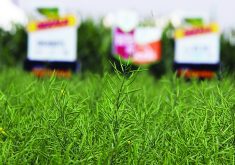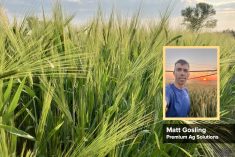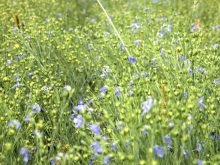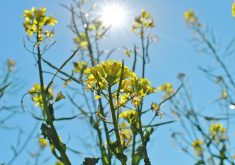In March David Andrews, a cattle rancher from Irricana, Alta, took photos of an unusual weed on pastureland near his farm.
Andrews suspected that the two-metre-tall weed was palmer amaranth, a weed found in most American states but not in Western Canada, yet.
Weed experts in Alberta and Arkansas looked at the photos and concluded it was common mullein, which is listed under Alberta’s Weed Control Act as a noxious weed.
Andrews got an answer to his question by consulting with weed scientists. But there is another way to report unusual or invasive weeds in Alberta.
Read Also

Growing garlic by the thousands in Manitoba
Grower holds a planting party day every fall as a crowd gathers to help put 28,000 plants, and sometimes more, into theground
Farmers or any Albertan can download a smart phone app, EDDMapS Alberta, which stands for Early Detection and Distribution Mapping System.
“We are moving to more of a citizen science-based approach, where (people) are report through an app,” said Nicole Kimmel, Alberta Agriculture weed scientist. “This gives the ability for anyone to go find a plant, compare it with anything we’re looking for (invasive species) in the province.”
The University of Georgia developed the EDDMapS program and it is widely used in the U.S.
An app user takes photos of the weed with a smartphone and the program uploads the photos to EDDMapS.
A verifier in Alberta reviews the images to check and confirm the weed species.
“Once it’s verified that it is a correct identification (of an invasive species), then the verifier… notifies the jurisdiction responsible,” Kimmel said.
The app automatically picks up the GPS co-ordinates of where the weed or invasive species was detected, so report locations are part of the EDDMapS Alberta website.
The website has distribution maps showing where things like leafy spurge and dames rocket have been detected.
Kimmel said EDDMapS is being used, but a limited number of Albertans have downloaded the app.
“We haven’t really had the promotion around it.”
The story is similar in Saskatchewan, where citizen reporting of invasive species with an app is just getting off the ground.
Saskatchewan Conservation is encouraging citizens to use a different program, called iMapInvasives. The app can be found at www.imapinvasives.org/mobile-tools.
“After signing up for a free account a person can utilize the iMap Invasives mobile applications,” said Beryl Wait, Saskatchewan Conservation Data Center invasive species co-ordinator.
“So far it’s in its early stages of utilization. However I have been fielding more inquiries regarding it lately.”
Like Alberta, the Invasive Species Council of Manitoba adopted the EDDMapS service. Manitobans are using the program because there are about 16,000 invasive species reports on the website at www.eddmaps.org/prairieregion/.
The Invasive Species Council of Manitoba doesn’t have a smartphone app for EDDMapS, so reports must be made through the website.
Farmers and people with no interest in apps or using web programs can also report unusual weeds the old-fashioned way by showing a sample to a government representative.
“It normally comes through the ag fieldmen (in Alberta),” Kimmel said. “A lot of producers use them as the first point of contact.”


















